Homemade Ground Coriander Powder - How to make, Use and store Coriander seeds - Dhaniya seeds. More insightful information about this heavily used Indian spices.

What is Coriander Powder
Ground, blended dried, toasted coriander or cilantro seeds, also called Dhaniya power, it is one of the main indian "Spices".
In india, cilantro or coriander is used root to stem to seeds. The fresh leaves are used to garnish the dishes or make chutneys, dried coriander seeds are used as a spice.
I can bet you a thousand dollars that it's there in every curry you have ever had.
I personally like is ground coarsely and not into a fine powder but that I think it's the north indian influence.
Down south, especially in Kerala households, coriander, cumin and pepper are roasted and ground together to make a "Masala" powder.
It is not a very pungent spice. It's more subtle, with a grassy taste and carries no heat. It's used to add volume to the spice mixes, sometimes to add some thickness to the curries.
One of my favourite curries that have the main flavor from freshly ground coriander is the Potato curry- made north indian style.
Why make at home?
You could just buy packaged whole coriander seeds. And in most cases they will be absolutely fine. In fact if I was not cooking indian food so often, i might opt to buy store bought ground coriander.
But I have always seen my mom and my grand ma and now my mother in laws and her mom too do this at home. I could be due to any of the below factors.
- Easy to make
- Pure - Free of impurities
- Fresh is always better- the smell ,Vibrance and taste are always better with fresher ingredients
- Coriander powder turns rancid quite fast. Where as coriander seeds can last for about a year or more in the pantry.
- It's cost effective when you buy seeds in bulk instead of buying smaller packs of ground coriander powder. Plus all that plastic!
Seeds stay longer than coriander powder.
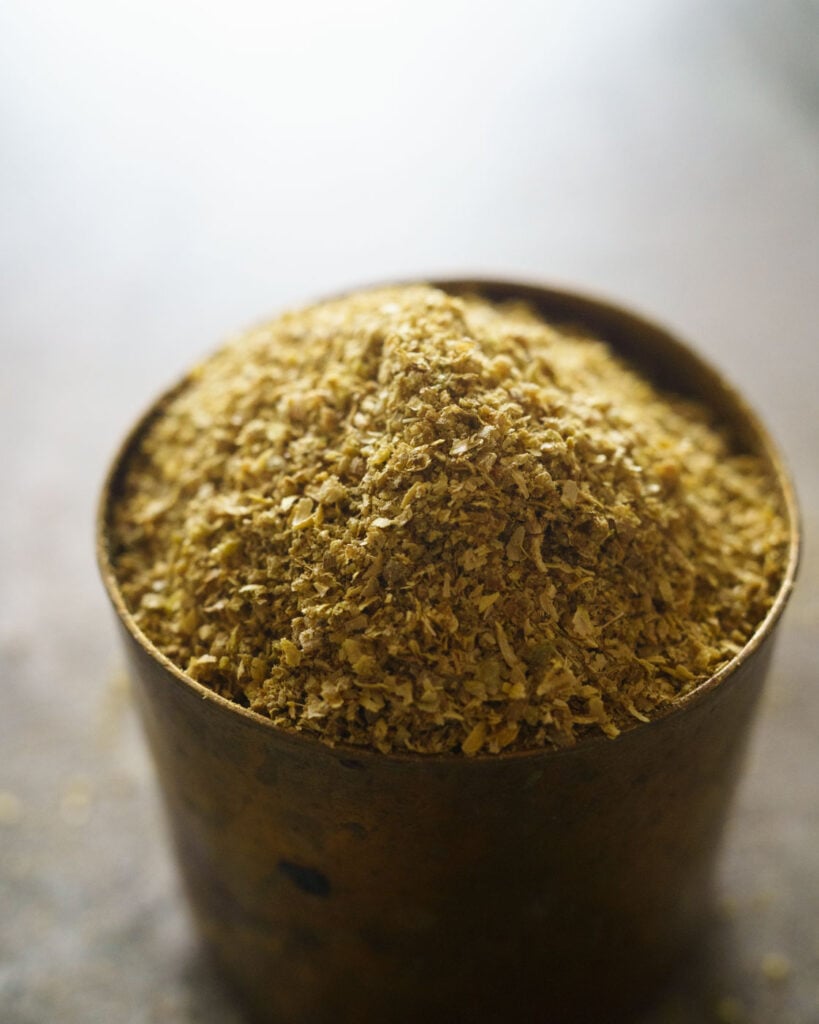
Where is Coriander Powder Used
Coriander powder is used in most Indian recipes from the north Indian Potato curry to south Indian Chicken Curry.
It is one of the "spices" in the curry powder that's widely used outside of india. In India, most folks prefer to keep their spices separate in a spice box. This allows them to change the proportions and combinations.
Though it's safe to say, coriander powder goes in almost all curries.
How to use Coriander Powder
Coriander powder can be added while tempering or later while simmering the curry.
A lot of times, it's added several times during the process of cooking.
Bhuna -When coriander is added after you have browned the onions.With this approach, the coriander gets mixed up in the curry(or dish) you are making. It's sort of like sum of the parts than separate.It also thickens the gravy.
Simmering -When added from the top, when the curry or dish is simmering, the coriander is much more noticeable as it has not had the time to simmer and mesh with the rest. Some dishes like kadhai paneer call for this approach.
Tempering - Add coarsely ground coriander to hot oil along with other usual suspects like cumin, chilies, garlic and ginger. The tempering is then poured over the dish giving it the final flourish.
History of Coriander
Coriander has a long and fascinating history in India, where it has been used for thousands of years for its culinary and medicinal properties. The plant is native to the Mediterranean region and has been cultivated in India since ancient times. Here is a brief history of coriander in India:
- Ancient India: Coriander was one of the spices that the ancient Indians traded with the Egyptians and Romans. It was also used in Ayurvedic medicine to treat a variety of ailments, including digestive problems, fever, and headaches.
- Medieval India: During the medieval period, coriander became an essential ingredient in Indian cuisine. It was used in curries, chutneys, and pickles, and was also added to breads and other baked goods.
- Colonial India: When the British arrived in India in the 17th century, they were introduced to Indian cuisine, which included coriander. They were so impressed by the spice that they began exporting it to Europe, where it became popular in British cuisine.
- Modern India: Today, coriander is an important ingredient in Indian cuisine, and is used in a variety of dishes, from samosas to biryanis. It is also used in traditional Ayurvedic medicine, where it is believed to have anti-inflammatory, antiseptic, and diuretic properties.
Coriander Powder substitute
Frankly, coriander powder is the foundation of indian cooking. So my suggestion is to either use it or omit it all toghether.
But in a pinch , there are a few substitutes that you can use:
- Cumin powder: Cumin powder can be used as a substitute for coriander powder in most recipes. It has a similar warm, earthy flavor and pairs well with other spices commonly used in Indian and Mexican cuisine.
- Garam masala: Garam masala is a spice blend commonly used in Indian cuisine that contains coriander powder along with other spices like cumin, cardamom, cinnamon, and cloves. If you have garam masala on hand, you can use it as a substitute for coriander powder.
- Fresh Coriander - The flavor is similar but fresh coriander is added as a garnish or a final flourish.
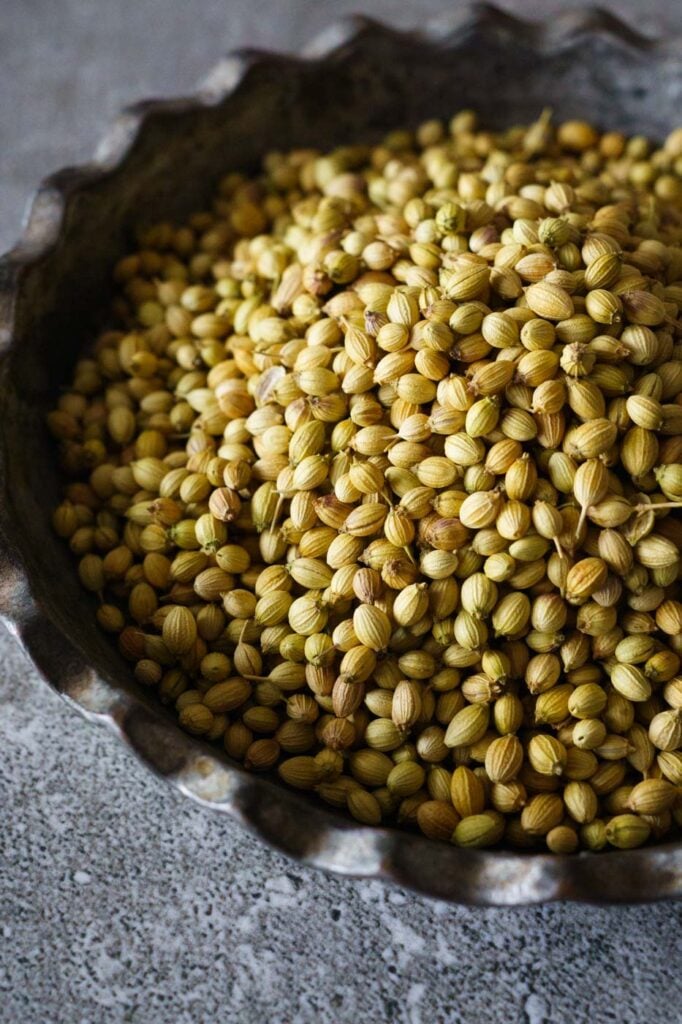
Coriander vs Cumin powder
Coriander powder is often paired with cumin powder in Indian cuisine, as they complement each other's flavors. The combination of the two is used in a variety of dishes, including curries, marinades, and spice blends.
Coriander powder has a slightly sweet and citrusy flavor with a mild, pleasant aroma. Cumin powder, on the other hand, has a warm and earthy flavor with a slightly bitter taste and a pungent aroma.
Coriander Powder is a lot more commonly used than ground cumin. Cumin is usually used in it's whole form rather than powder.
How to make Coriander Powder
Step 1: Toast
Use a heavy bottomed pan- it can get burn quickly.Toast it while moving it around on low heat.
Toasting also reduces the water ; makes it last longer. It also releases extra flavor.
You can find already roasted coriander seeds in most indian groceries.
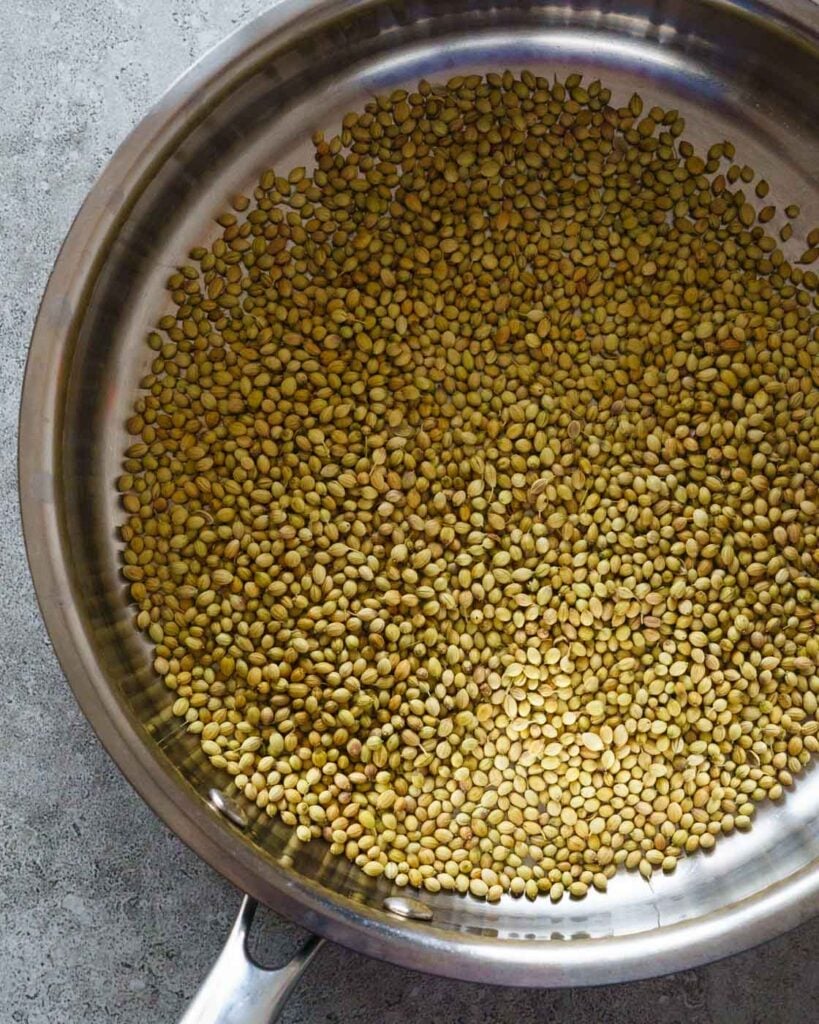
Step 2: Grind it
Transfer the coriander seeds to a blender or a coffee grinder.
Let the seeds cool a bit before proceeding to blend them.
Pulse it a couple of times to get a coarse consistency. You can also store them at this stage and pound them in mortar and pestle as and when needed.
If you like a fine powder of coriander seeds, blend it for a 1-2 minutes.

Storage & Shelflife
Store the ground coriander in an airtight container.
Ground coriander will possibly last for 3-4 months in an air tight container.
If you see the coriadner powder forming clumps, its time to get rid of it.
Benefits of Coriander
Coriander, also known as cilantro, is an herb that is commonly used in cooking and is known for its distinctive flavor and aroma. It is also known for its health benefits, which include:
- Rich in antioxidants: Coriander is rich in antioxidants that help protect against cellular damage caused by free radicals. Antioxidants have been shown to reduce the risk of chronic diseases, such as heart disease and cancer.
- May lower blood sugar: Studies have shown that coriander may help lower blood sugar levels, making it a potential natural remedy for diabetes.
- May improve digestion: Coriander has been used for centuries as a digestive aid. It contains compounds that help stimulate the production of digestive enzymes, which can help improve digestion and reduce bloating and discomfort.
- Anti-inflammatory properties: Coriander has anti-inflammatory properties that may help reduce inflammation in the body. Chronic inflammation is linked to many diseases, including arthritis, heart disease, and cancer.
- May lower cholesterol: Some studies suggest that coriander may help lower cholesterol levels in the blood. This is likely due to the herb's antioxidant properties and its ability to stimulate the production of bile, which helps the body break down fats.
- Rich in vitamins and minerals: Coriander is a good source of vitamins and minerals, including vitamin C, vitamin K, iron, and potassium.
Notes
Roasting Spices- Roast spices separately or roast similar sized spices together.
Garam Masala - Coriander is one spice that's not added to garam masala even though its always used along with it. The reason being coriander powder can get rancid a lot faster than rest of the ingredients.
Indian Dishes it's used in
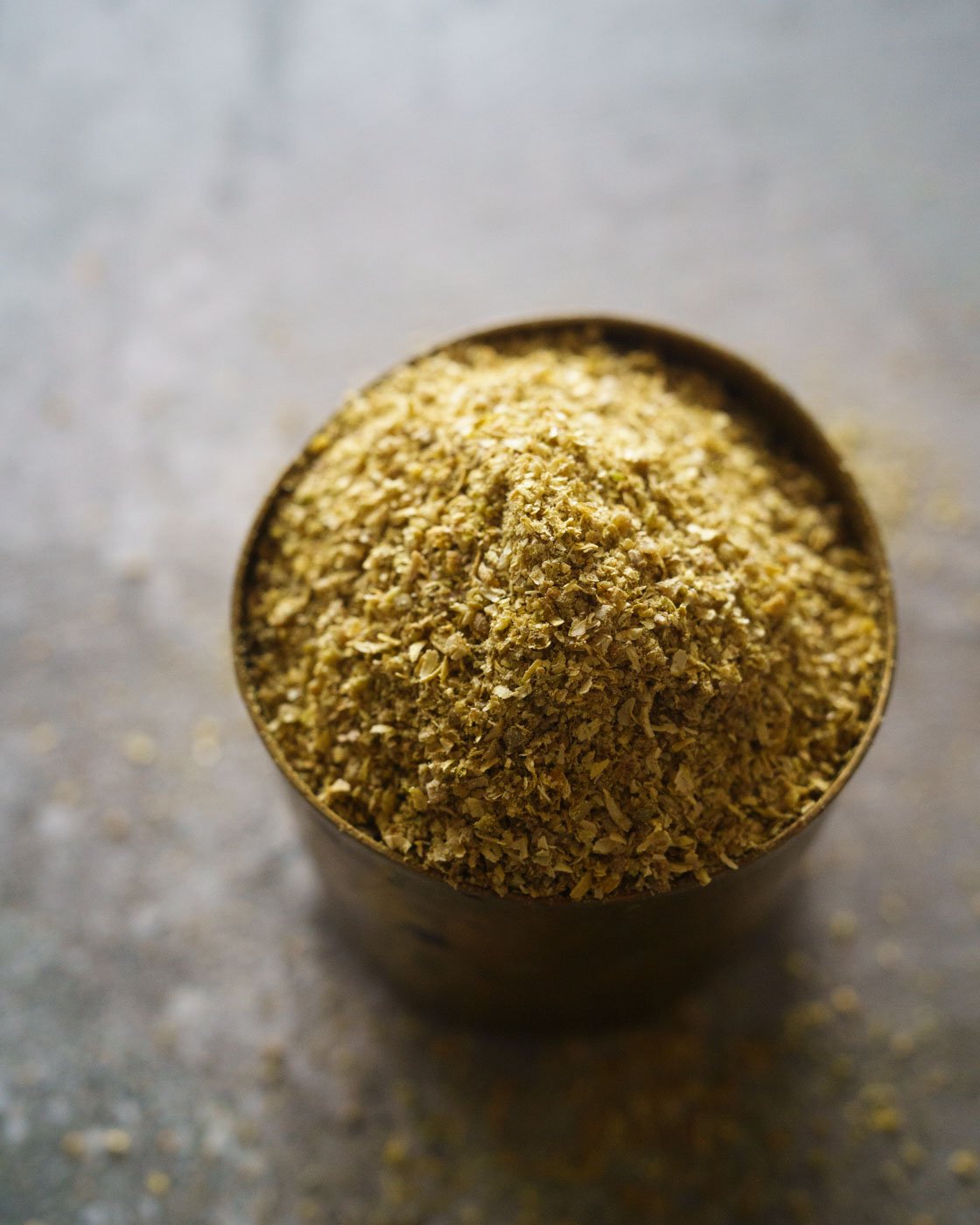
Ground Coriander Powder
Equipment
Ingredients
- 2 Cups Coriander Seeds
Instructions
- Toast the coriander seeds on low- medium heat till you can smell the aroma.
- Let it cool down slightly.
- for a Coarse Powder -Pulse it a couple of times in the blender
- For a Fine Powder -Blend it for 20-30 seconds in the blender
- Store in an Air Tight container for upto 6 months


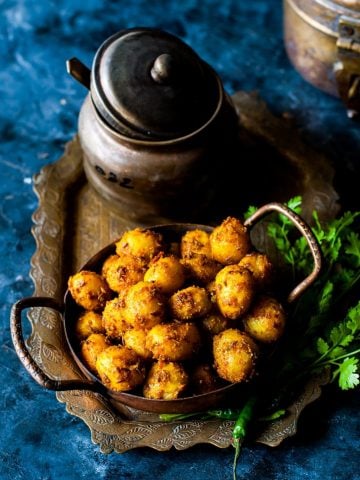
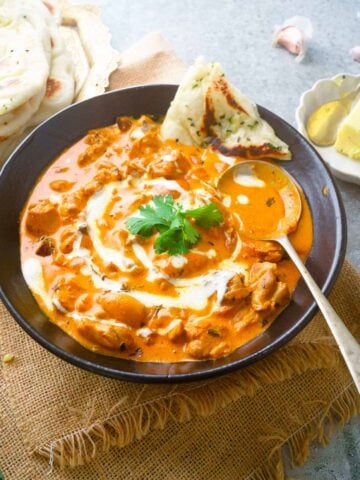
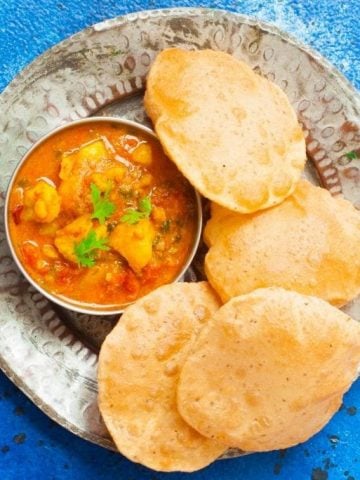
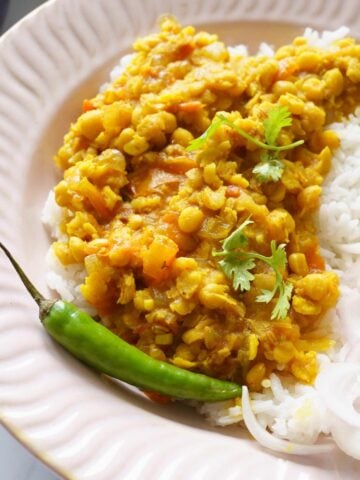
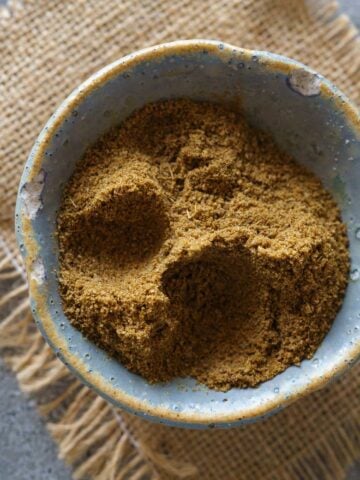
Leave a Reply